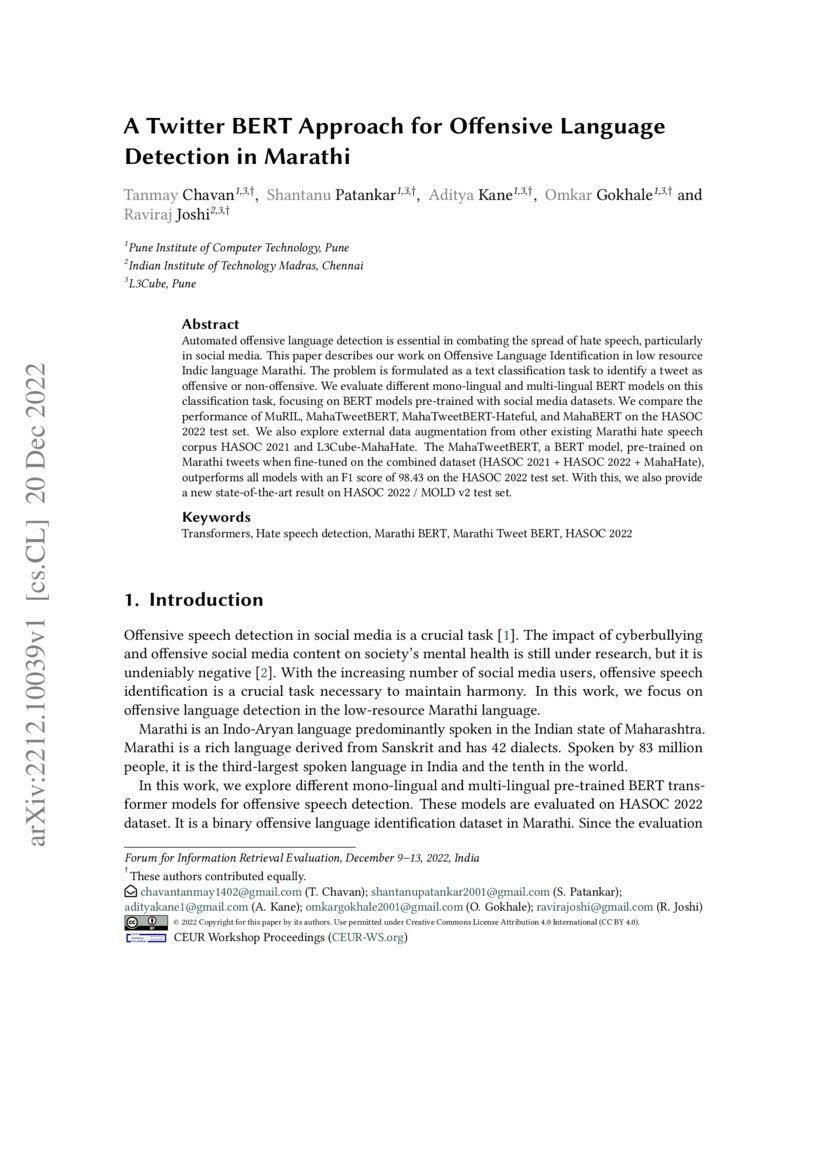Unlocking Google’s BERT Update: Decoding the Enigmatic Power of Language Algorithms
In the expansive realm of virtual landscapes and unfathomable data troves, Google stands as an omnipresent colossus, tirelessly striving to decipher the perplexing maze of human language. Amidst a whirlwind of hazy queries and elusive meanings, Google’s groundbreaking BERT update emerges as the beacon of hope, poised to era-defining prominence. Breaking free from the chains of traditional search algorithms, this enigmatic update brings forth a new era of understanding where context is no longer a fleeting whisper but a reverberating thunderclap. As we delve into the depths of BERT’s captivating revolution, prepare to unravel the secrets, as this innovative update cracks the code to unfathomable possibilities in the realm of online search. Bengin your voyage, as we embark on a journey that harnesses the creative force of BERT, while navigating through an article that explores the depths of its prowess. Welcome to a world where language meets algorithms, where Google empowers every word with the ability to transcend its mere letters and embrace its true meaning.
Table of Contents
- Understanding Google’s BERT Update: Revolutionizing Search Algorithms
- Unleashing the Power of BERT: The Key to Natural Language Processing
- Harnessing the Benefits of BERT: Strategies for Optimizing Content
- Cracking the Code: Unveiling Google BERT’s Potential for SEO
- Q&A
- Wrapping Up

Understanding Google’s BERT Update: Revolutionizing Search Algorithms
Google recently introduced a groundbreaking update to its search algorithm called BERT (Bidirectional Encoder Representations from Transformers). This update aims to enhance search results by better understanding the context and nuances of search queries, ultimately revolutionizing the way users find information on the web.
So, what exactly is BERT? It’s essentially a natural language processing technique that helps Google better grasp the meaning behind search queries. With BERT, Google can comprehend the subtle intricacies of language, such as context and intent, leading to more accurate and relevant search results. Think of it as a super intelligent language interpreter that makes search engine queries much more intuitive and effective. To put it simply, BERT enables Google to understand what users mean, rather than just relying on keywords or phrases. This means a more refined search experience, as Google can now return results that truly match the user’s intent, even if the query contains complex or ambiguous language.
- BERT analyzes the meaning and context behind words, leading to more accurate search results.
- It helps Google understand long-tail keywords and complex queries better.
- With BERT, search results are tailored to the user’s intent, resulting in higher satisfaction and relevance.
- By comprehending conversational language, BERT enhances voice search and natural language processing capabilities.
- Google’s BERT is a step towards bridging the gap between how humans understand language and how search engines interpret it.
- Unlike previous updates, BERT focuses on understanding the entire query rather than individual words or phrases.
With BERT, we can expect a more user-centric search experience, where search engines genuinely understand what we’re looking for. Gone are the days of receiving irrelevant results or struggling to express our queries in a search-friendly manner. As beginners, this update is a golden opportunity to explore and optimize our content for the new world of search. So let’s embrace the power of BERT and crack the code of improved search algorithms together!

Unleashing the Power of BERT: The Key to Natural Language Processing
Understanding the complex world of Natural Language Processing (NLP) can be a daunting task for beginners. But fear not, as we unveil Google’s latest breakthrough – BERT. This revolutionary update in NLP brings tremendous advancements in understanding the nuances of language, making it a game-changer for both developers and users.
So, what exactly is BERT and why is it causing such a stir? Simply put, BERT stands for Bidirectional Encoder Representations from Transformers. It is a state-of-the-art language model created by Google that takes into account the context of each word in a sentence by considering both the left and right surrounding words. This remarkable bidirectional approach ensures a deeper comprehension of the meaning behind a statement, leading to improved accuracy and overall quality of language processing.
- BERT understands language contextually: Unlike traditional NLP models, BERT analyzes the entire sentence before understanding each word’s meaning. It captures the essence of the language better than ever.
- It grasps subtle nuances and ambiguities: BERT’s bidirectional nature allows it to decipher complex language structures and handle ambiguous words with greater accuracy. It’s like having a language expert in the palm of your hand!
- Improved performance in search and understanding: BERT has a profound impact on search engines and machine learning applications. It aids in delivering more relevant search results and enables more accurate understanding of user queries.
With these incredible capabilities, BERT brings us one step closer to seamless human-like interactions with machines. The potential applications are vast, including voice recognition, sentiment analysis, chatbots, and much more. Exciting times are ahead as this groundbreaking technology continues to evolve and shape the future of Natural Language Processing!

Harnessing the Benefits of BERT: Strategies for Optimizing Content
The Google BERT update has been creating quite a buzz in the SEO world, and for good reason. This update has brought about a major shift in how search engines understand and interpret content, ultimately leading to more accurate search results. But how can you harness the benefits of BERT and optimize your content to stay ahead in the ever-evolving digital landscape?
1. Context is Key: BERT focuses on understanding the context of words in a sentence, allowing search engines to grasp the meaning behind complex queries. To optimize your content, make sure to provide detailed and relevant information that answers your audience’s questions. Include long-tail keywords that reflect user intent and anticipate the queries they might have.
2. Natural Language Matters: BERT’s emphasis on natural language processing means that search engines can better understand conversational-style queries. Optimize your content by using a conversational tone and incorporating commonly used phrases and synonyms. By sounding more like a human and less like a robot, you can boost your chances of ranking higher in search results.
3. Go Beyond Keywords: BERT has shifted the focus from just matching keywords to understanding the overall context of a query. Rather than solely relying on specific terms, strive to create comprehensive and informative content. By providing in-depth answers and covering related topics, you can demonstrate your authority in the subject matter and increase your chances of appearing in relevant search results.
4. Optimize for Featured Snippets: BERT has a significant impact on featured snippets, which are the concise answers displayed at the top of search results. To optimize for featured snippets, structure your content in a way that directly answers common questions associated with your topic. Use clear headings, bullet points, and concise summaries. This will increase the likelihood of your content being featured, driving more organic traffic to your website.
5. Embrace User Experience: BERT aims to improve the overall user experience by delivering more relevant and accurate search results. To optimize your content for BERT, focus on enhancing user experience. Ensure your website is mobile-friendly, loads quickly, and provides easy navigation. Include engaging visuals and use formatting elements like headings, subheadings, and bulleted lists to make your content scannable and user-friendly.
By harnessing the power of BERT and implementing these strategies, you can optimize your content to stay ahead in the ever-changing world of SEO. Stay informed about the latest developments and continue to refine your content based on user needs and search engine requirements.

Cracking the Code: Unveiling Google BERT’s Potential for SEO
Google’s BERT update has sent shockwaves through the SEO community, but what exactly does it mean for website owners and marketers? If you’ve been scratching your head trying to decipher this code, fear not! We’re here to uncover the secrets and unleash the power of BERT for your SEO strategy.
1. Understanding BERT: Let’s start with the basics. BERT stands for Bidirectional Encoder Representations from Transformers. Simply put, it’s a language model developed by Google to better comprehend the context and nuances of search queries. Unlike previous algorithms, BERT focuses on the entire sentence rather than individual words, making it more adept at understanding user intent and delivering relevant search results.
2. User-Focused Content: With BERT, Google is putting a spotlight on user experience. It wants to ensure that search results are not only accurate but also provide valuable answers to users’ queries. To capitalize on this update, it’s crucial to create high-quality, user-focused content. Gone are the days of keyword stuffing and shallow content. Instead, focus on creating in-depth, engaging pieces that directly address the search queries of your target audience.
3. Long-Tail Keywords: BERT’s ability to understand natural language means that it can decipher the context behind long-tail keywords. Long-tail keywords are longer, more specific phrases that users search for when they have a clear intent. By incorporating relevant long-tail keywords into your content, you can improve its visibility in search results and attract highly targeted traffic.
4. Semantic Search: BERT has made semantic search even more important. Semantic search aims to understand the meaning behind words, taking into account synonyms, related concepts, and contextual understanding. To optimize your content for semantic search, consider using LSI (Latent Semantic Indexing) keywords that are closely related to your main topic. This will help Google better understand the context and relevance of your content.
In a nutshell, Google’s BERT update represents a shift towards more nuanced and user-centric search results. By understanding and harnessing the power of BERT, you can take your SEO strategy to new heights, ensuring your content is not only relevant but also valuable to your target audience. So, crack the code and embrace the potential of BERT for SEO success!
Q&A
Q: What is Google’s BERT update and why is it important?
A: Google’s BERT (Bidirectional Encoder Representations from Transformers) update is a major algorithmic advancement in natural language processing. It enables search engines, like Google, to better understand the context of words and decipher the true meaning behind queries, improving search results accuracy and relevancy.
Q: How does BERT enhance the understanding of search queries?
A: BERT’s strength lies in its ability to comprehend the nuances of language by analyzing words in relation to one another. It understands the context and meaning behind prepositions, which can drastically alter the intent of a search query. This allows search engines to display more relevant results, even for complex or conversational searches.
Q: Will BERT impact my website’s SEO and rankings?
A: Yes, BERT can potentially influence your website’s SEO and rankings. However, the purpose of this update is to provide users with more accurate results, not to punish websites. It is crucial to create informative and engaging content that genuinely addresses user intent. By aligning your website’s content with users’ queries, BERT can actually work in your favor.
Q: How can website owners optimize their content for BERT?
A: To optimize for BERT, it is vital to focus on creating high-quality content that answers users’ questions precisely. Avoid overloading your content with excessive keywords or buzzwords, as BERT’s algorithms are designed to identify natural language patterns. Utilize long-tail keywords and provide in-depth information on relevant topics to increase your chances of matching user intent.
Q: Is BERT limited to English queries or does it work with other languages too?
A: While BERT initially launched for English queries, Google has expanded its applications to a variety of languages. As of now, BERT is available for over 70 languages, enabling search engines to better analyze and interpret non-English queries, leading to more accurate search results globally.
Q: Can BERT impact voice search and conversational queries?
A: Absolutely! With the rise in voice assistants and voice searches, BERT plays a significant role in understanding conversational queries. By interpreting the contextual meaning of words, BERT allows voice assistants, like Google Assistant, to comprehend complex instructions and deliver more precise responses.
Q: How can businesses adapt to the BERT update to boost their online presence?
A: Adapting to the BERT update requires focusing on user-centric content. Aim to provide value and address users’ queries accurately. Conduct thorough keyword research and align your content with long-tail queries to match user intent effectively. Additionally, analyzing your website’s search data and user behavior can help identify areas where BERT can be leveraged to improve your online visibility.
Q: Are there any potential challenges or pitfalls with the BERT update?
A: While BERT brings significant improvements to search, it is essential to keep in mind that it is not a magic solution for all SEO challenges. As with any algorithm update, it is crucial to monitor changes in your website’s rankings and performance, and make adjustments if necessary. Additionally, understanding and adapting to the evolving search landscape is indispensable to stay ahead of the competition.
Q: Can BERT affect search rankings for featured snippets?
A: Yes, BERT has the potential to impact search rankings for featured snippets. Google aims to improve the quality and accuracy of featured snippets by being more adept at understanding and matching the user’s intent. By optimizing your content to align with featured snippet requirements, you can increase your chances of earning those coveted positions in search results.
Wrapping Up
As we wrap up this exploration into Google’s BERT update, it becomes evident that the world of search is evolving at an astonishing pace. The intricate language nuances that shape our daily interactions are now being deciphered by algorithms that were engineered for comprehension and relevance. BERT, with its remarkable ability to understand context, has undoubtedly unleashed the power to deliver more accurate search results and a seamless user experience.
As we take a step back and reflect on the potential of BERT, it becomes clear that the landscape of search engine optimization and content creation is fundamentally shifting. No longer can we rely solely on keyword density and tricks to game the system. The focus now shifts to crafting valuable, engaging, and contextually rich content that truly aligns with users’ intent. It is a call to action for content creators and SEO specialists alike to delve deeper into language nuances, embrace natural conversational flow, and focus on providing relevant information to their audience.
However, let us not forget the amazing possibilities that BERT introduces beyond search engines. Its deep understanding of language has the potential to significantly impact a wide range of applications, from voice assistants to language translation tools, and even content moderation systems. As this update continues to evolve and refine itself, we can expect a future where technology becomes seamlessly integrated into our daily lives, understanding us with unprecedented accuracy.
So, as we bid farewell to this deep dive into Google’s BERT update, we hope that you’ve gained valuable insights into the potential and importance of this revolutionary language understanding model. Embrace the power that BERT wields and harness it to create meaningful, informative, and engaging content that resonates with your audience. The communication gap between humans and machines continues to shrink, and we have the opportunity to be at the forefront of this extraordinary transformation.
In a world where language is the key that unlocks our understanding of the universe, BERT has arrived to crack the code. Let us embark on this journey together, armed with newfound knowledge and an unwavering commitment to empower the future of search and language comprehension. The possibilities are endless, and the power to unlock them lies within your grasp.

